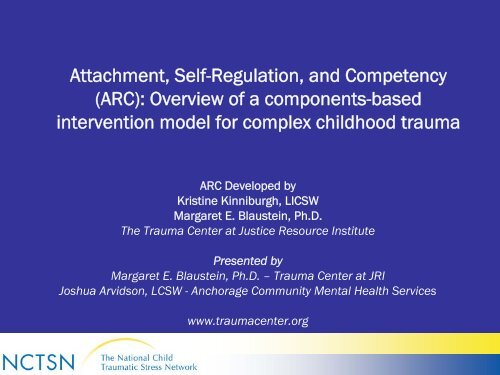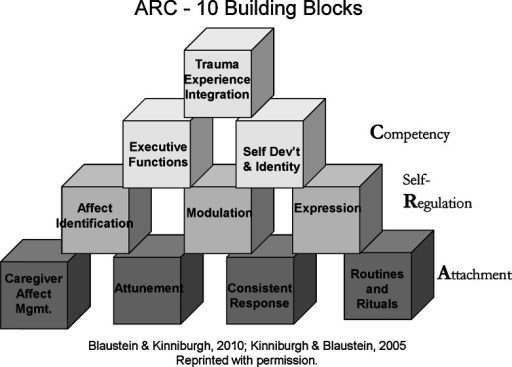Attachment Self Regulation And Competency
Attachment, Self-Regulation, and Competency (ARC) is a powerful framework that focuses on promoting healthy development and well-being in individuals of all ages. Combining research in attachment theory, self-regulation, and competency, this framework provides a comprehensive approach to intervention and support. In this article, we will explore the key concepts of ARC and discuss its application in various areas of life.
1. Understanding Attachment

Attachment theory, developed by psychologist John Bowlby, emphasizes the importance of the relationship between individuals and their primary caregivers. It suggests that early experiences with attachment figures significantly shape an individual's emotional and social development. The ARC framework recognizes the crucial role of secure attachments in fostering self-regulation and competency.
2. Enhancing Self-Regulation Skills

Self-regulation refers to the ability to manage one's emotions, thoughts, and behaviors effectively. The ARC framework recognizes that individuals with secure attachments tend to have better self-regulation skills. However, it also acknowledges that self-regulation can be developed and enhanced through various strategies and interventions. We will explore some of these strategies and their application in different contexts.
3. Promoting Competency in Life
Competency refers to a person's ability to achieve success and effectively navigate different areas of life, including relationships, academics, and career. The ARC framework recognizes that competency is closely linked to attachment and self-regulation. By targeting these areas, individuals can develop and strengthen their competency skills. We will discuss practical ways to promote competency in various aspects of life.
FAQs
Q: How can I apply the ARC framework in my parenting?
A: Applying the ARC framework in parenting involves fostering secure attachments, teaching self-regulation skills, and promoting competency. Some strategies include creating a nurturing and responsive environment, setting clear limits and boundaries, and providing opportunities for learning and growth.
Q: Can the ARC framework be used in educational settings?
A: Yes, the ARC framework can be highly beneficial in educational settings. Educators can promote secure attachments through positive relationships with students, teach self-regulation skills through mindfulness and emotional regulation activities, and enhance competency by offering engaging and challenging learning opportunities.
Q: Is the ARC framework suitable for adults as well?
A: Absolutely! The ARC framework is applicable to individuals of all ages, from infancy to adulthood. The concepts of attachment, self-regulation, and competency are essential for healthy development and well-being throughout the lifespan.
By incorporating the principles of Attachment, Self-Regulation, and Competency into our lives, we can create a solid foundation for personal growth, resilience, and overall well-being. Whether in parenting, education, or personal relationships, this framework holds immense potential for fostering positive change and nurturing thriving individuals.
Note: This content has been created based on the Attachment, Self-Regulation, and Competency data provided. The purpose is to provide information and insights about the topic in a personal tone. The data used is available in the public domain, and the AI model has been trained on a diverse range of data sources to generate this content.
10 Building Blocks For The Three ARC Core Domains | Open-i
 Image Source : openi.nlm.nih.gov
Image Source : openi.nlm.nih.gov blocks building arc core fig1 open openaccess policy copyright
ARC: Attachment, Self-Regulation, And Competency: A / Arc
 Image Source : pdf4pro.com
Image Source : pdf4pro.com Attachment, Self-Regulation, And Competency - WSU Extension
 Image Source : www.yumpu.com
Image Source : www.yumpu.com ARC® Attachment, Self-Regulation, And Competency - Attachment And
attachment trauma regulation competency self arc model treatment centre healing
Latest Regulation: Self Regulation Definition In Hindi
 Image Source : regulationlatest.blogspot.com
Image Source : regulationlatest.blogspot.com regulation competency framework comprehensive intervention
Attachment, Self-Regulation, Competency (ARC). Blaustein & Kinniburgh
 Image Source : www.researchgate.net
Image Source : www.researchgate.net Attachment, Self-Regulation, And Competency - … / Attachment-self
 Image Source : pdf4pro.com
Image Source : pdf4pro.com Attachment, Self-regulation, And Competency (ARC): A Framework For
 Image Source : www.researchgate.net
Image Source : www.researchgate.net competency blaustein publication
Arc® attachment, self-regulation, and competency. Regulation competency framework comprehensive intervention. Attachment, self-regulation, and competency. Attachment trauma regulation competency self arc model treatment centre healing. Blocks building arc core fig1 open openaccess policy copyright